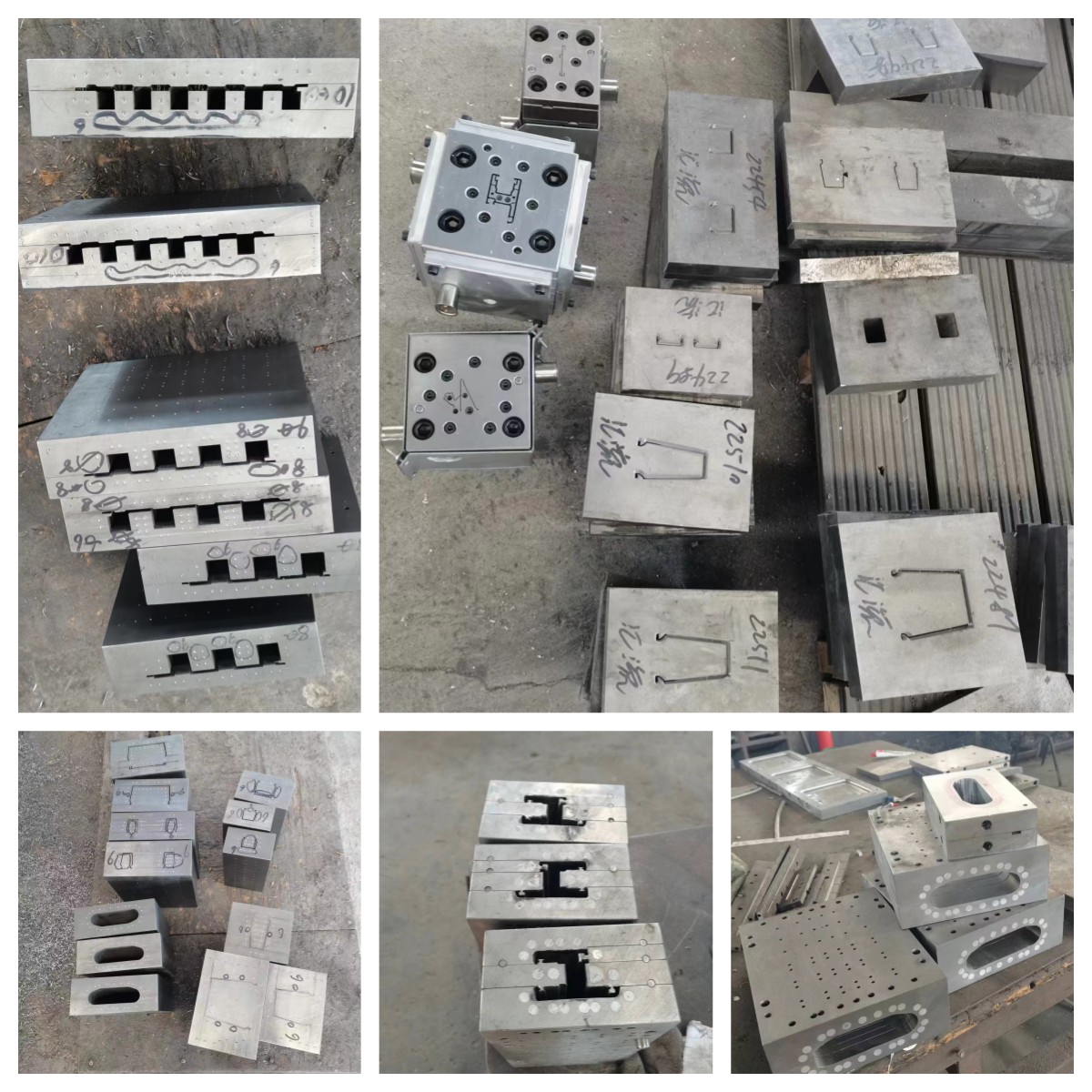Add: 21-2#, Xinggang Road, Huangshigang Industrial Zone, Huangshi City, Hubei Province
Tel: 0086-13597667790
Contact: Kate Yan
E-mail: kate@hongxingmold.com
Website: www.hongxingmold.com
Details

Thermoplastic profiles have a large-scale application in the construction, medical, electric and
electronic industries, among others. The term profile is commonly used to designate products of
constant cross section that are obtained by the extrusion process.
A typical extrusion line for the production of thermoplastic profiles generally comprises an
extruder, a die, a calibration/cooling system, a haul-off unit and a saw, as shown in Figure 1.
Figure 1 - Typical profile extrusion line (Battenfeld Extrusionstechnik GmbH).
The major objective of any extrusion line is to produce the required profile at the highest rate and
quality [1]. These goals are usually conflicting, i.e., the increase in speed generally affects the
product quality negatively, and vice-versa. Therefore, the improvement of the extrusion line
performance demands a systematic approach and a careful study of the phenomena involved in the
Anais do 9 o Congresso Brasileiro de Polímeros
process [2]. The die and the calibration system are the extrusion line components that play a central
role in the establishment of the product dimensions, morphology and properties and are also those
that establish the maximum allowable production rate [3].
The difficulties to be faced in the design of an extrusion die are closely related to the complexity of
the profile to be produced. In fact, while the design of an extrusion die for the production of a rod is
almost straight-forward, in the case of a complex window profile it can be an extremely complex
process. From the geometrical point of view the extrusion die flow channel must transform a
circular cross section, corresponding to the melt leaving the extruder, into a shape similar to that of
the profile. Due to the large number of phenomena and restrictions involved and to the complexity
of the polymer melt rheological behaviour, extrusion die design was, and still is, more an art than a
science [4]. The design process is usually based on trial-and-error procedures, which are strongly
dependent on the designer knowledge and experience [4], often requiring several trials. As a
consequence, the design process is usually very time, material and equipment consuming, affecting
product price and performance [5], since it does not guarantee the achievement of an optimum
solution.
The complex behaviour of the polymer melt during flow through the die, together with the expected
slight variations of the operating conditions/polymer rheological properties, make it very difficult to
produce the required melt extrudate cross-section with precise and stable dimensions. For this
reason, the calibration/cooling system is used to establish the final most relevant dimensions of the
profile while cooling it down until a temperature that guarantees its shape along the downstream
stages [3]. Moreover, as the profile progresses along the line, it is subjected to a variety of external
forces (such as friction, buoyancy and compression), being necessary to guarantee that it is strong
enough to withstand these forces without deforming [3]. From a thermal point of view, the
calibration/cooling system must also ensure fast rate uniform cooling of the extrudate in order to
induce the adequate morphology and a reduced level of thermal residual stresses [6]. In practical
terms, the temperature gradient along both the profile contour and its thickness must be minimized
[7] and its average temperature at the calibration/cooling system outlet must fall bellow the
solidification temperature, in order to avoid subsequent melting [8]. Furthermore, to ensure that the
profile will be properly handled, before the saw point, all cross section temperatures must fall
bellow the solidification temperature.
Information